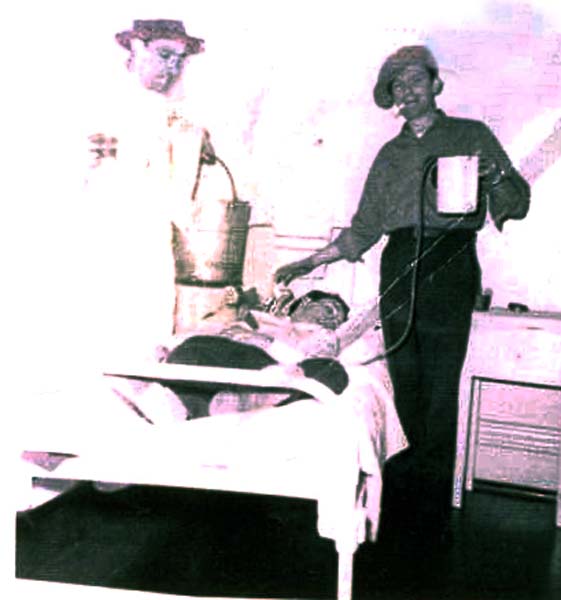Shock Therapy

A patient being brought out of an insulin coma, circa 1930. The earliest form of shock therapy used in asylums was Insulin Shock. This process was extremely dangerous as it could result in comas and seizures. It was quickly replaced by Metrazol, which was followed by electroconvulsive therapy. In all cases patients had to be carefully monitored. RMHCL
1 |
2
Shock therapy has been in use in asylums since the early 1930s. The earliest form shock therapy, insulin therapy was invented by Manfred Sakel in 1933 as one of the first treatments that involved inducing comas or seizures. Sakel first tested his treatment on "addicts" and "neurotics," and seeing some improvement in their condition reasoned that it might be a viable treatment option for patients with schizophrenia. Sakel recorded that "the convulsions and comas of the deep shock brought about dramatic psychological changes in the patient. . .the indications were rather that the physiological shock restored the homeostasis in the nerve cell by forcing it to mobilizing its defence reactions, thus causing a restoration of the balance in the automatic nervous system. . .In this, [he] thought, lay the curative efficacy of the Insulin Shock Treatment."
In 1939, the former London Asylum opened its Metrazol clinic. Metrazol replaced insulin therapy in most of the Ontario asylums as it was easier to administer than insulin shock. Metrazol was first used in clinical experiments by Hungarian physician, Ladislaus von Meduna in 1933. Meduna reasoned that artificially induced epileptic convulsions might "cure" schizophrenia due to his observations of patients who had both epilepsy and schizophrenia. Meduna noticed that those patients who had epileptic seizures would experience a remission of their symptoms of schizophrenia. Metrazol was one of many convulsant drugs used to induce seizures. The Asylum began to phase out its use in 1943, turning instead to electroconvulsive therapy.
Scientists began to experiment with electricity to shock patients in the late 1930s. Italian doctors Ugo Cerletti and Lucio Bini were the first to successfully use electroconvulsive treatment on a human subject in April 1938. This new form of shock treatment began to be used by institutions throughout the world in the early 1940s. The 1942 report from the Asylum shows London's interest in acquiring an ECT machine, in order to initiate plans to replace Metrazol treatments with electroconvulsive therapy. It was not until 1944 that ECT was used exclusively at the London Asylum.
Shock treatments were administered up to three times a week, and could take place over several weeks. Many dangers are associated with shock therapy, including fractured bones from the convulsions, and brain damage. Electroconvulsive therapy, although still controversial, is used on patients suffering from depression, catatonic or manic excitement, paranoid reactions, hebephrenics, and schizophrenia.